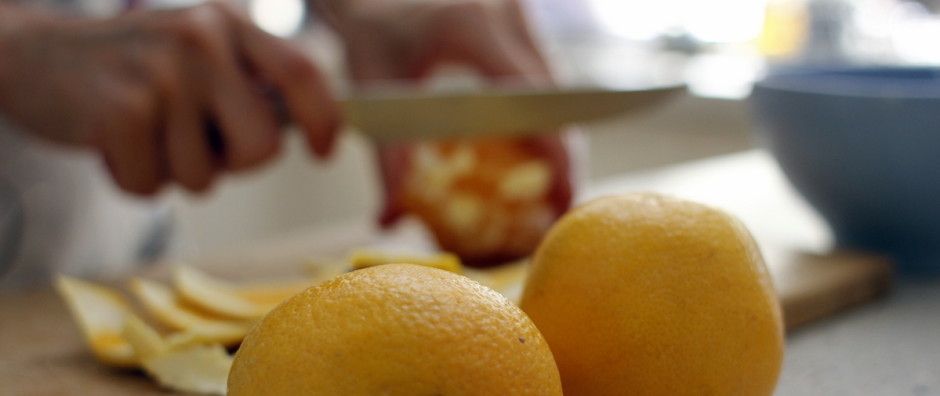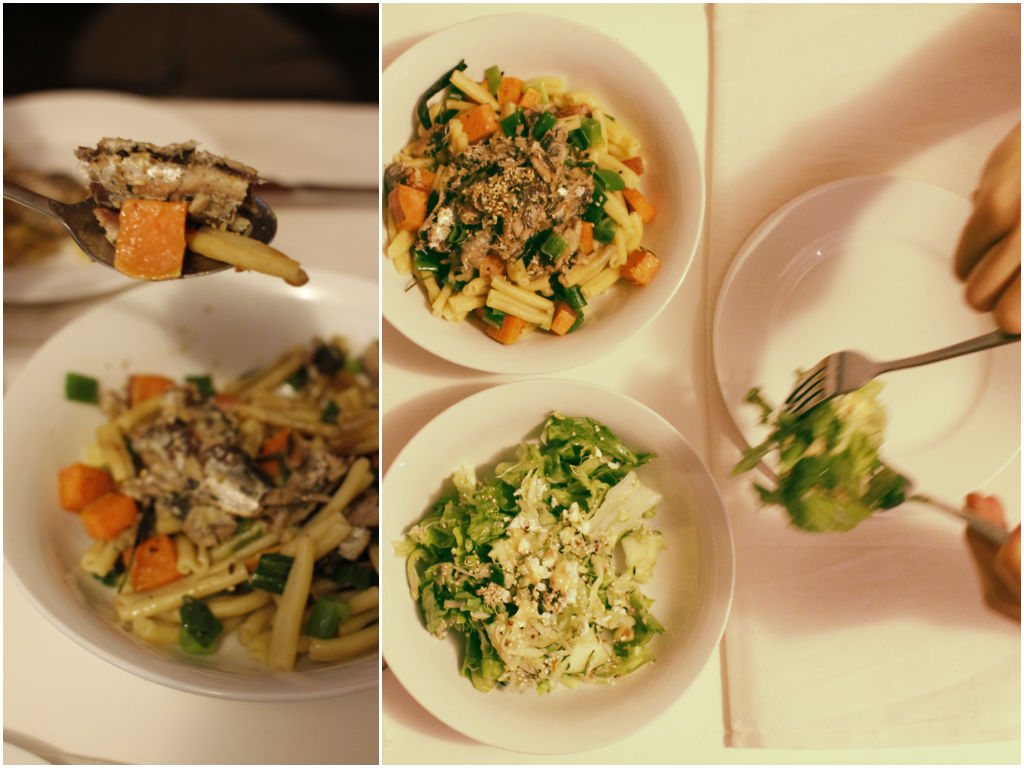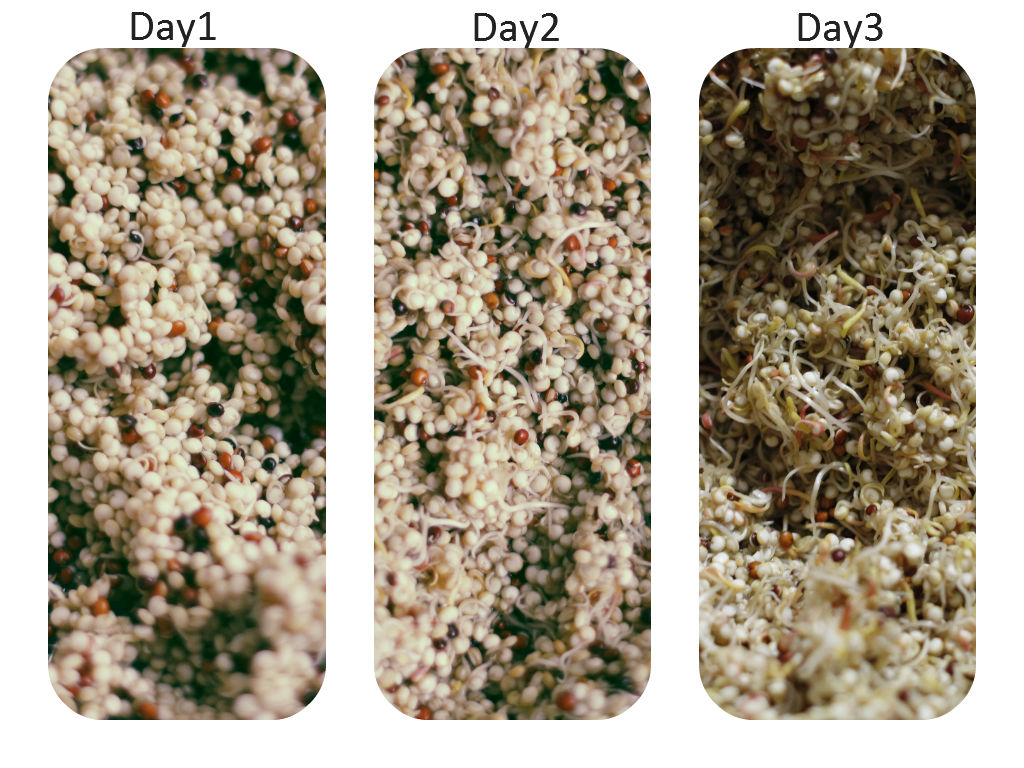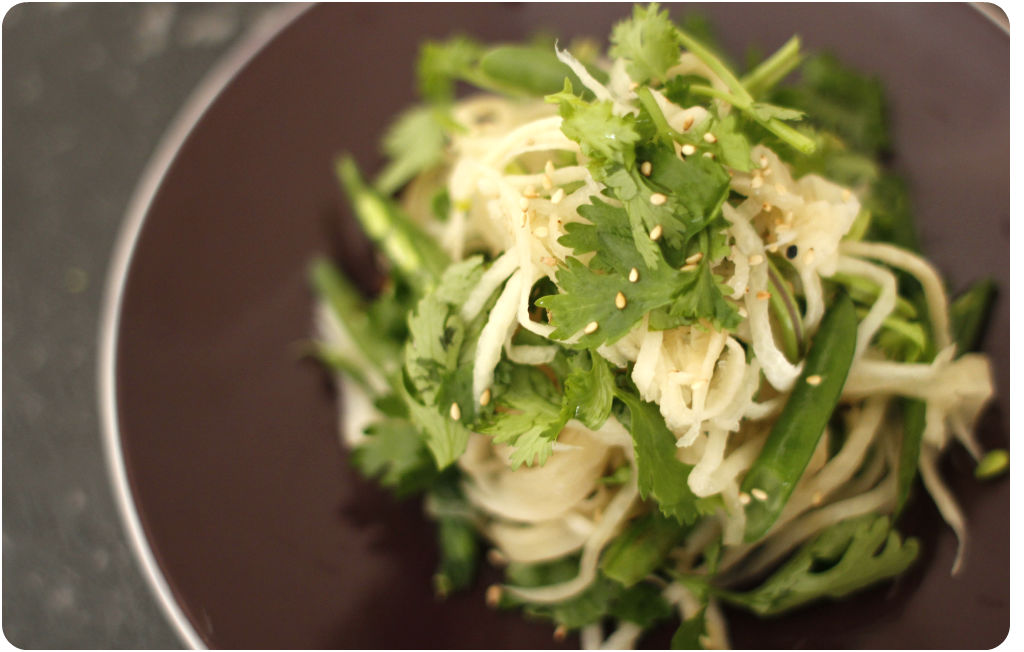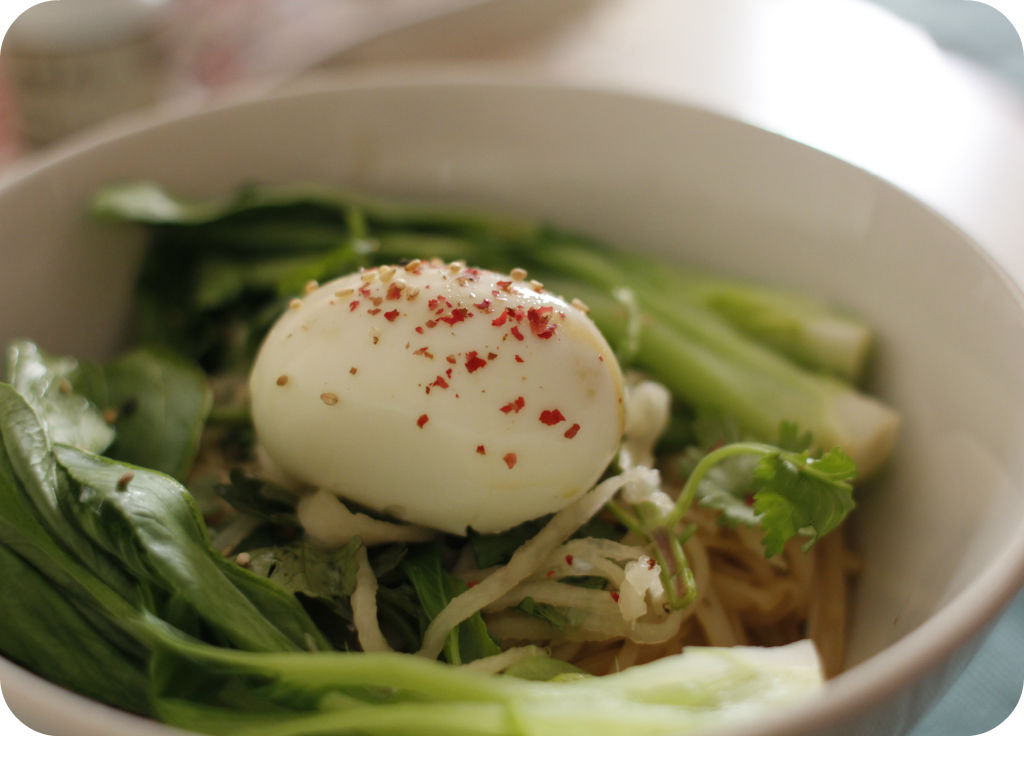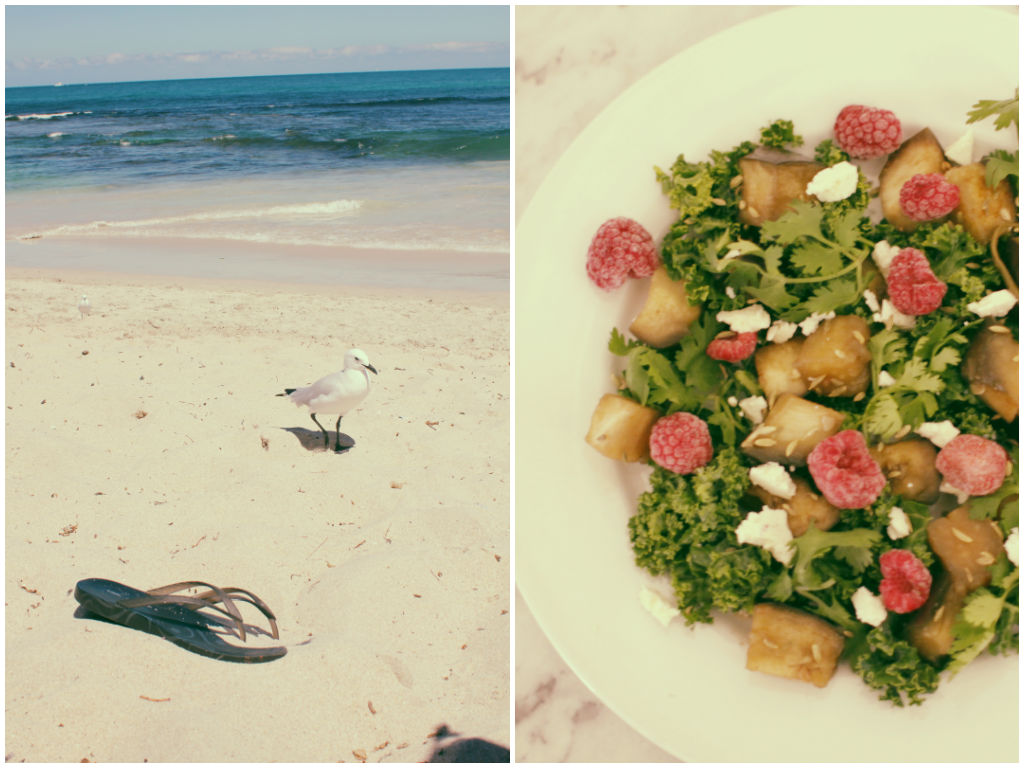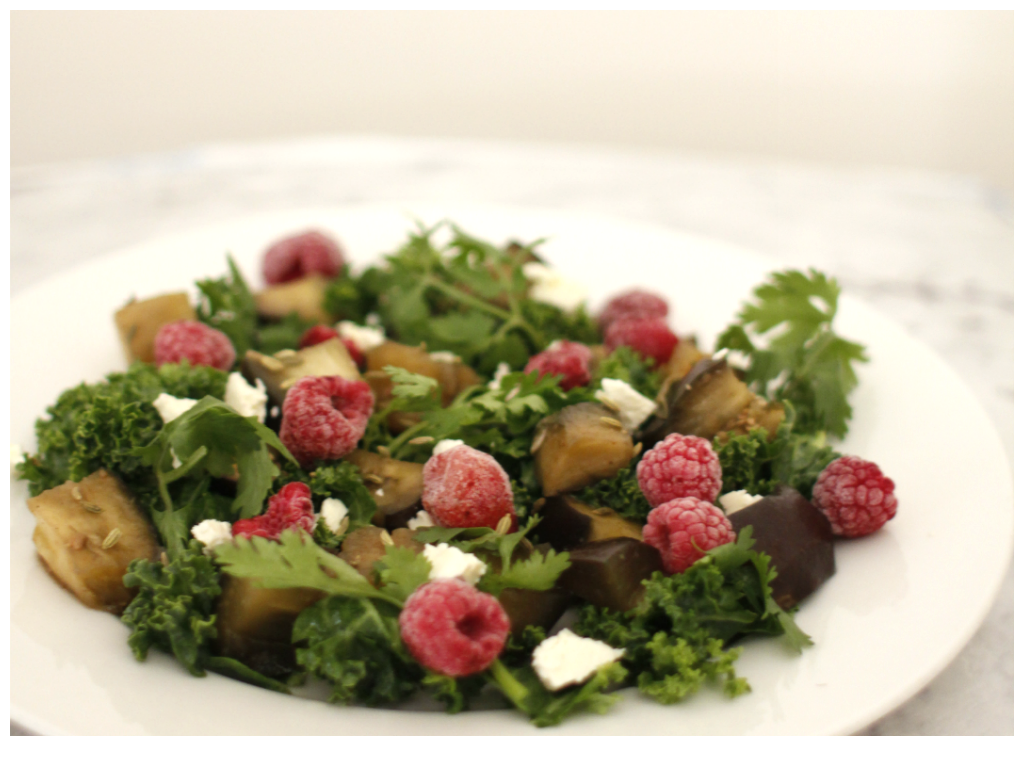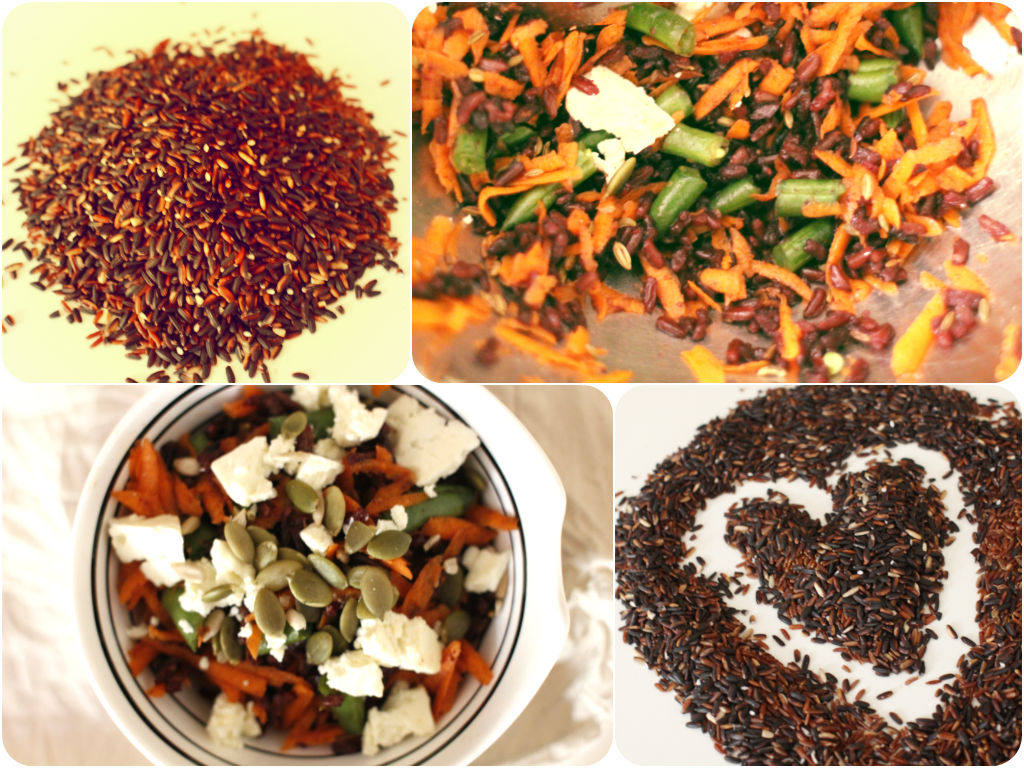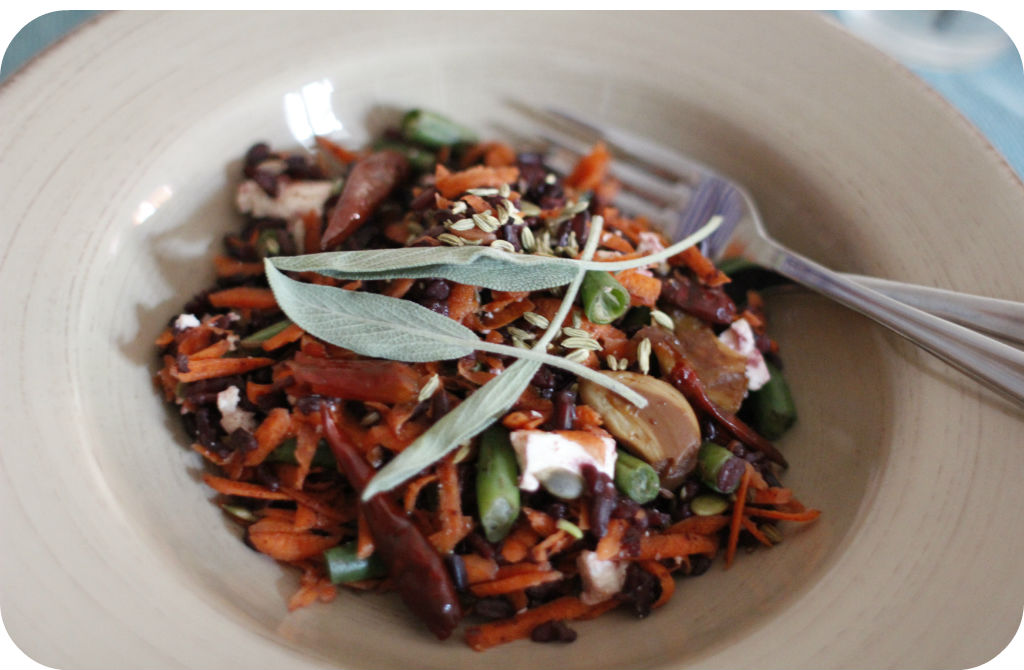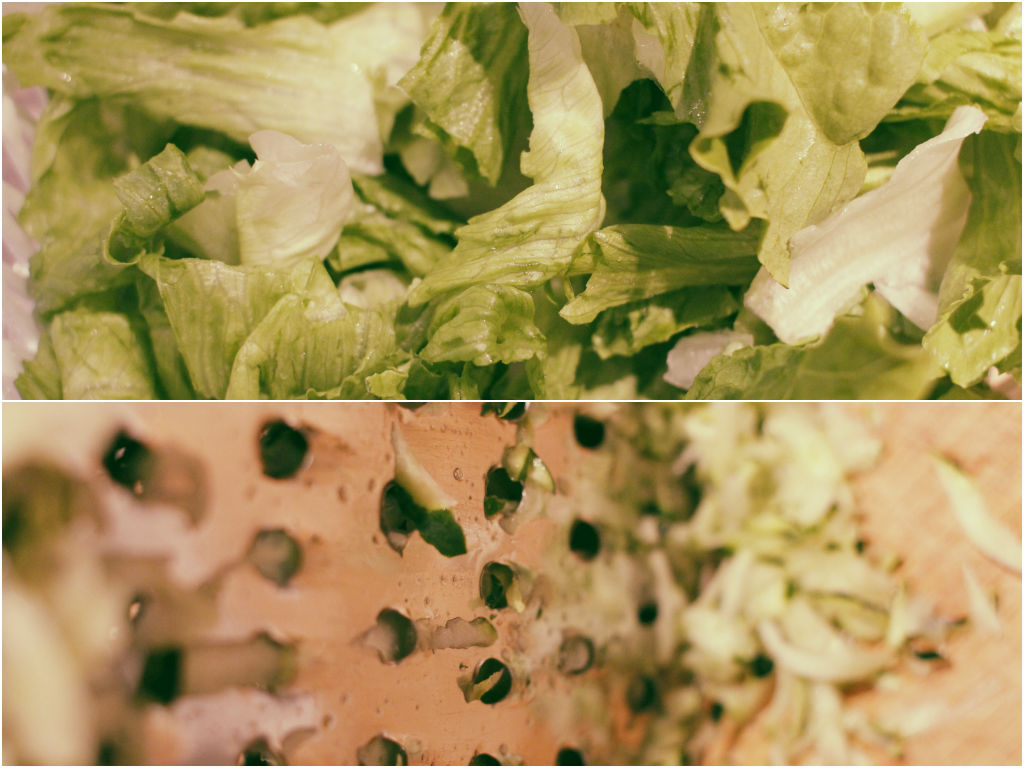 It’s 37 degrees again today! I thought it would cool down in March, but Autumn seems so far away yet. After successfully sprouting quinoa, I decided to make some cool salads with it. Something refreshing, crunchy and tasty! I wish I added some chopped parsley in this green salad, but oh well, I didn’t bother going down to the veggie shop today. Too hot for me >.< I also decided to make some pasta salad for Daniel, as well, with sweet potato, sage, green onions and sardines.
It’s 37 degrees again today! I thought it would cool down in March, but Autumn seems so far away yet. After successfully sprouting quinoa, I decided to make some cool salads with it. Something refreshing, crunchy and tasty! I wish I added some chopped parsley in this green salad, but oh well, I didn’t bother going down to the veggie shop today. Too hot for me >.< I also decided to make some pasta salad for Daniel, as well, with sweet potato, sage, green onions and sardines.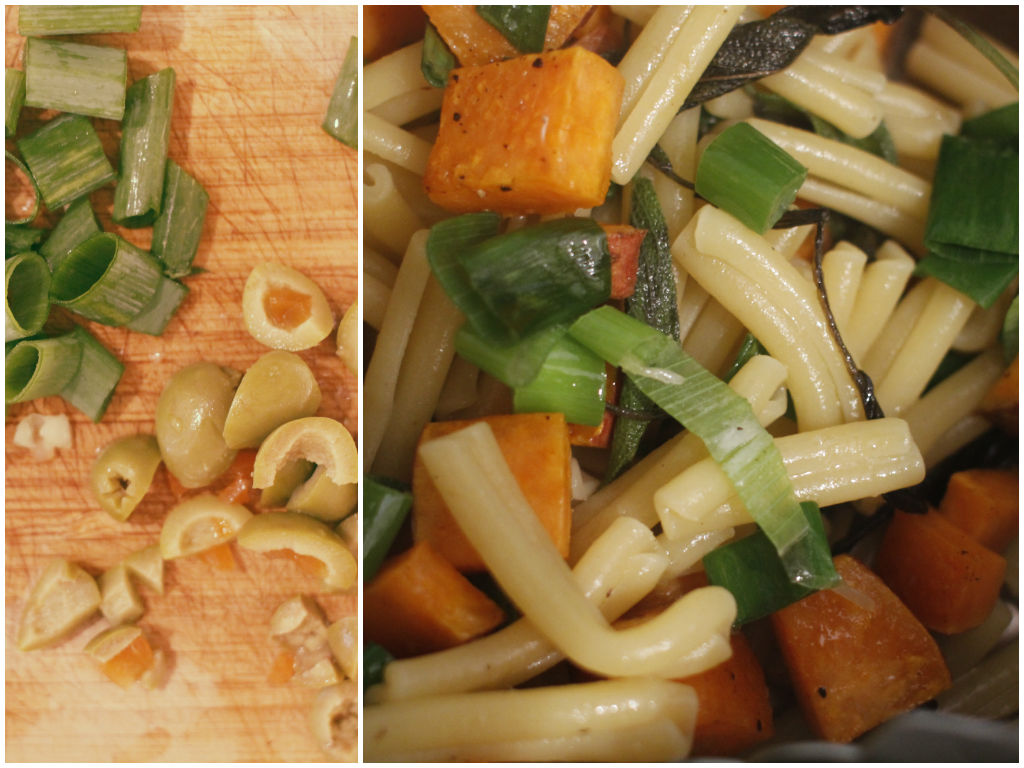 Sprouted Quinoa Salad
Sprouted Quinoa Salad
Ingredients
1/2 cup of sprouted quinoa
2 cups of lettuce
1 cup of grated zucchini
1 cup of chopped cucumber
50g of feta cheese
1/2 cup of chopped green olives
1 tsp of dijon mustard
1 tsp of white wine vinegar
1 tsp of e.v.o.o
pepper to taste
Wash and tear the lettuce leaves into bite sizes. Mix them with sprouted quinoa, grated zucchini, chopped cucumber and olives, crumbled feta cheese. For a mustard vinaigrette, mix dijon mustard, vinegar and e.v.o.o in a small bowl and drizzle over salad before serve. I just used pepper to taste because olives and feta cheese are salty enough.
Ingredients
a cup of cooked pasta
1/2 cup of diced sweet potato
1 bunch of sage
a stalk of spring onion
a tin of sardines in spring water
a tsp of nutmeg
a tsp of coconut oil
a tsp of balsamic vinegar
salt and pepper to taste
Cook pasta in a boiling water with a touch of salt for 9 minutes or follow the instructions on the packet. Cook diced sweet potato with coconut oil in a pan. Season. Add sage leaves and chopped spring onions into the pan. Once sweet potatoes are cooked and sage leaves crisp up, take them off the heat and place them in a mixing bowl. Then drain the sardines from tin and cook in the same pan to crisp up outside (you can lightly crumb the sardines). Drain cooked pasta and add into a mixing bowl. Gently combine pasta and sweet potatoes with a drizzle of balsamic vinegar. Put on the serving plate and top with crispy sardines. Add salt and pepper to taste.
